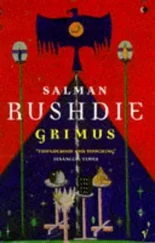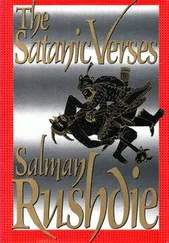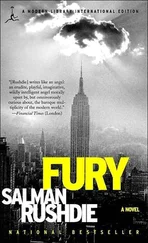Shalimar the clown stood on the street corner surrounded by Arabic and when men came up for cigarettes Zahir the Boy did the work and Shalimar the clown grinned stupidly and pointed at his ears and open mouth, meaning I’m deaf and dumb, I can’t talk to you, I have no idea what you’re saying. Then the man in the photograph appeared, wearing blue-tinted sunglasses and an open white shirt and cream slacks and carrying a folded newspaper in his left hand. The man walked quickly toward the car park and Shalimar the clown took off the vending tray, picked up the cloth with the pistol inside and followed him. He was holding the cloth in his left hand and didn’t take the gun out because he wanted to know what it would feel like when he placed the blade of his knife against the man’s skin, when he pushed the sharp and glistening horizon of the knife against the frontier of the skin, violating the sovereignty of another human soul, moving in beyond taboo, toward the blood. What it would feel like when he slashed the bastard’s throat in half so that his head lolled back and sideways off his neck and the blood gushed upwards like a tree. What it would feel like when the blood poured over him and he stepped away from the corpse, the useless twitching thing, the piece of fly-blown meat. Zahir came running and the windowless van came round a corner fast and the man who smelled of musk pulled him inside and slammed the door and the van drove away quickly while the man who smelled of musk shouted at him for a long, long time. Zahir the Boy said, “He says you are insane. The gun had a silencer fitted and would have been quick and clean. You disobeyed orders and he should kill you for this.” But Shalimar the clown was not killed. Zahir the Boy translated what the man who smelled of musk said after he had calmed down. “For a man like you, a complete fucking crazy asshole, there will always be plenty of work.”
So he knew the answer to his question and had learned something about himself that he had not known before. The years passed and indeed there was plenty of work. He became a person of value and consequence, as assassins are. Also, his secret purpose was achieved. He had passports in five names and had learned good Arabic, ordinary French and bad English, and had opened routes for himself, routes in the real world, the invisible world, that would take him where he needed to go when the time for the ambassador came. He remembered his father teaching him to walk the tightrope, and realized that traveling the secret routes of the invisible world was exactly the same. The routes were gathered air. Once you had learned to use them you felt as if you were flying, as if the illusory world in which most people lived was vanishing and you were flying across the skies without even needing to get on board a plane.
FC-22 was different when he returned: larger, more solidly constructed. It no longer looked like a bandits’ hideout. Many wooden houses had been built, and Nissen huts erected. Talib the Afghan had returned to active military service and Zahir the Boy was also long gone. Maulana Bulbul Fakh was there, however, and welcomed Shalimar the clown with the words, “You’re just in time. The uprising is near.” He had been away too long. Sheikh Abdullah, the Lion of Kashmir, had been dead for five years. There had been India-Pakistan clashes on the Siachen Glacier, twenty thousand feet above sea level. But it was the just-concluded polls that changed everything. This was the year 1987, and the Indian government had held state elections in Kashmir. Farooq Abdullah, the Sheikh’s son, was the government’s preferred choice. The opposition party, the Muslim United Front, named as its candidate one Mohammad Yousuf Shah, described by General Hammirdev Kachhwaha as the state’s “most wanted militant.” Unofficially, as the results came in, it became plain that the wrong man was winning. So the election was rigged. MUF supporters and electoral agents were seized and tortured. Mohammad Yousuf Shah went underground, and as Syed Salahuddin became the chief of the militant group Hizb-ul-Mujaheddin. His closest aides, the so-called HAJY group (Abdul H amid Shaikh, A shfaq Majid Wani, J aved Ahmed Mir and Mohammad Y asin Malik), crossed the mountains and joined the JKLF. Thousands of previously law-abiding young men took up arms and joined the militants, disillusioned by the electoral process. Pakistan was generous. There were AK-47s for everyone.
Abdurajak Janjalani had gone home and started up a new group of his own, the “Sword Bearers,” or Abu Sayyaf faction. He had often talked about doing this, and more than once tried to recruit Shalimar the clown to help him. “Brothers from everywhere gathering,” he had said. “You see. It will be triumph for our international.” Seeing that Shalimar the clown had other things on his mind, Janjalani had not pressed him, but had assured him that there would always be a place for him in the struggle. “If you want to come to Basilan,” he said, “this person, call him. All fixed very quick and well. Brother Ramzi coming. There are so-much funds.” The name on the piece of paper meant nothing to Shalimar the clown but when the Sword Bearers hit the news fast with a campaign of bombings and kidnappings for ransom, the world’s visible and invisible networks began to buzz and various names did begin to crop up, such as Mohammed Jamal Khalifa, a cousin of Sheikh Usama’s who ran a large number of Islamic charities in the southern Philippines and was spoken of as a major financier of the new group. President Qadhafi of Libya condemned Abu Sayyaf but Libyan charities in the southern Philippines also came under suspicion as possible channels for Libyan state cash. Likewise, the names of certain prominent Malaysian figures began to occur in the same sentence as the words Abu Sayyaf. The name and telephone number on Shalimar the clown’s piece of paper were both Malaysian, but neither ever appeared in the press. Of course the piece of paper had existed for less than an hour. Shalimar the clown had fixed the name and the number in his head and burned the paper as soon as the work of memorization was done.
The Gegroo brothers had gone, too. The secular nationalist ideas of the JKLF militants had never been to their liking, and Talib the instructor had steered them (before he also left) in the direction of the most “Afghan” of the newer groups, the Lashkar-e-Pak or Army of the Pure. The LeP had moral as well as political aims. A month before Shalimar the clown’s return to FC-22, the Gegroos had taken part in an LeP raid on the village of Hast in Jammu & Kashmir Rajouri district. LeP posters had appeared in the village ordering all Muslim women to don the burqa and adhere to the dress and behavioral principles laid down by the Taliban in Afghanistan. Kashmiri women were mostly unaccustomed to the veil and ignored the posters. On the night in question the LeP group, including the Gegroos, took reprisals. They entered the home of Mohammed Sadiq and killed his twenty-year-old daughter, Nosen Kausar. In the home of Khalid Ahmed they beheaded twenty-two-year-old Tahira Parveen. In the home of Mohammed Rafiq they killed young Shehnaaz Akhtar. And they beheaded forty-three-year-old Jan Begam in her own home.
In the months that followed the LeP grew bolder and moved its activities into Srinagar itself. Women teachers were doused with acid for failing to adhere to the Islamic dress code. Threats were made and deadlines issued and many Kashmiri women put on, for the first time, the shroud their mothers and grandmothers had always proudly refused. Then, in the summer of 1987, the LeP posters appeared in Shirmal. Men and women were not to sit together and watch television anymore. That was a licentious and obscene practice. Hindus were not to sit among Muslims. And of course all women must instantly put on the veil. Hasina Yambarzal was outraged. “Tear all those posters down and announce business as usual,” she ordered her sons. “I don’t intend to watch my TV programs through a hole in a one-woman tent, nor do I plan to be liberated into a different kind of jail.”
Читать дальше











